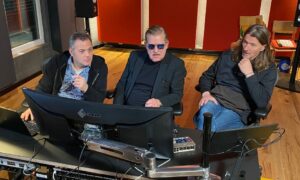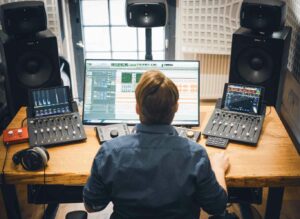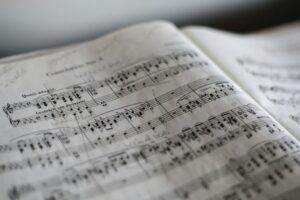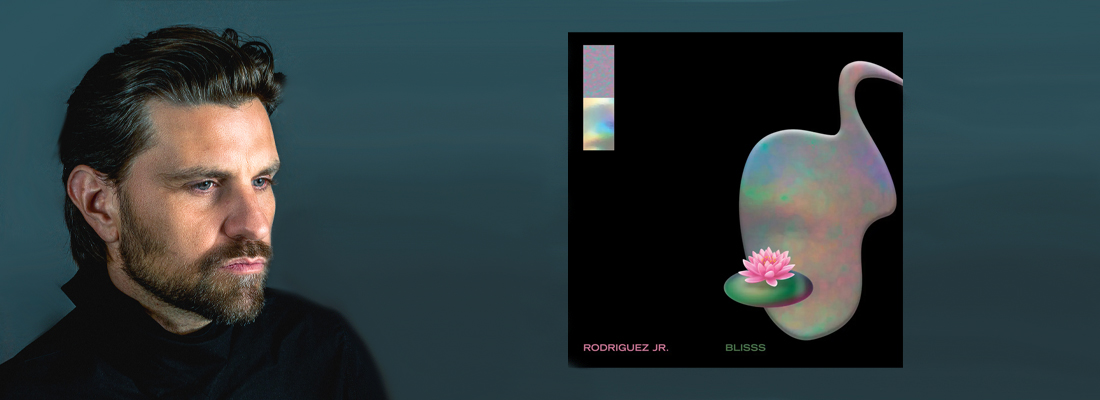
Rodriguez Jr.‘s latest studioalbum BLISSS has been released in Dolby Atmos on Pure Audio Blu-ray. We talked with the Award-winning music
producer about his feelings about Dolby Atmos, how he creates his music and who inspires him.
Your album „BLISSS“ has been released on Pure Audio Blu-ray. How did it feel to hear BLISSS in Dolby Atmos?
I have always conceptualized my music in terms of architecture, with volumes, colors and forms. With this in mind, I believe a Dolby Atmos version is the perfect extension of this vision. This technology allows us not only to listen to the music but to dive deeply into it’s multitude of textures.
Did you create the Dolby Atmos mix yourself or did you collaborate with someone? What were some of the challenges during the mix and how did you approach them?
I did not create the mixes myself, the Dolby Atmos adventure for me began with Eric Horstmann from Immersive Studios in Berlin, he’s the one who truly initiated me into this technology and who explained the possibilities to me. He is the one who is responsible for translating the album into Dolby Atmos. The biggest challenge is to give a particular space to sounds that were recorded oftentimes even with mono analog inputs, for instance the way in which I use my analog audio mixer which is an integral part of my sound, has been transposed to a multi-channel soundscape. We are constantly experimenting and communicating ideas in efforts to find the best approach for recreating the artifacts that you get when you distort signals in stereo.
Do you follow a specific process when checking a mix or an arrangement?
The art of mixing down is about shining the right light on a track but the most important point is about emphasizing the emotion in the song, and so when I check a mix either I feel something and it transports me somewhere, or it’s just loud and flat and it doesn’t work.
What’s the best way for you to work in the studio?
I like to begin with as little thinking as possible, searching for a melody or a chord progression or a texture on the piano and from there I begin to construct and begin to bring shape to the idea utilizing my faithful setup. There is no predefined recipe but I make sure that all my equipment is connected and ready to be invited for it’s contribution, I like to enter a flow of creativity and not have to think if a machine is connected or not, it’s sort of like a dance, you can’t really stop to think of the next step or you miss the whole thing.
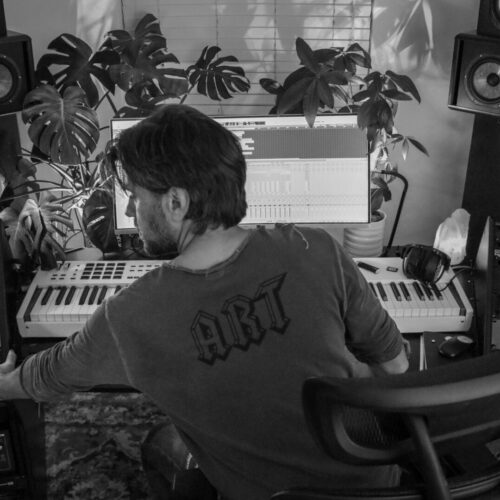
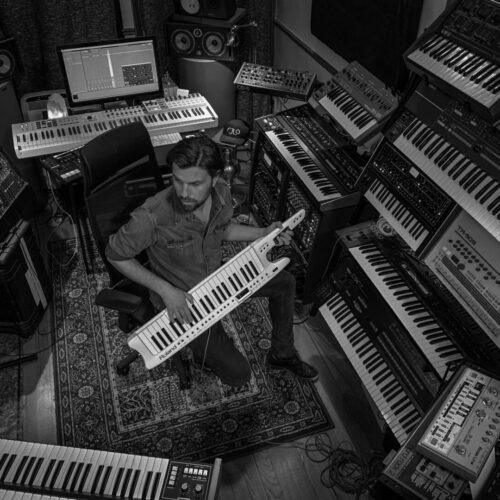
I read that you incorporated field recordings on “BLISSS”. Can you give a few examples and explain why you chose these recordings?
Even when you can’t hear it, there is always a field recording in the back like a thin layer on the surface. Even if they are inaudible I am personally connected to the story they hold in the sound, for example at the end of Nairobi there’s a field recording of tropical rain falling on the giant leaves in the garden outside my hotel room in Playa del Carmen.
Please name 3 synths that would suffice for you to create a few albums just using these instruments. It would also be great if you could point out what you appreciate about these tools.
The Roland Jupiter 6. It’s a polyphonic synth which I’ve owned for over 25 years and I know by heart, it’s one of my first analog synths. I have used it so much through the years that it is basically and extension of myself. It offers a very large spectrum of sounds and I have always used it for pads and stabs.
The Roland SH101. This is a very interesting, simple synth with a very strong character, and it does what only IT can do. It’s great for bass, leads, sequences.
The ARP 2600. My childhood dream synth. It’s a synth that is very powerful with infinite possibilities. It’s a machine that is as good as it’s pilot.
What’s your favorite effect at the moment and what do you like about it?
At the moment I’m a big fan of the ‘black hole’ preset on my Eventide DSP 4000. It’s such a lush reverb that you just want to dive into it and never return like Jacques Mayol at the end of the Big Blue.
You worked with Nouvelle-Vague-singer Liset Alea on “Blisss”. What are important factors to consider when incorporating vocals in the kind of music you are making?
There’s the sound of the voice, but there’s also the songwriting and the creativity, even if it’s electronic music we are still writing songs and telling a story so it is important to find a true artistic alliance and partnership that gets us to an unforgettable song.
Repetition is an important factor in electronic (dance) music. How do you find the right measure here between too much monotony and too many changes?
I don’t think. The universe is organized into rhythms, cycles and repetitions; the heartbeat, the spin of particles, the rotation of planets, things we don’t think about but which allow us to exist and in my music repetition gives me the solid ground on which I can create.
Do you still remember what attracted you to house music in the beginning?
The sounds and the repetition. I was always attracted by electronically generated sounds on the radio, the fact that they do not originate from an acoustic space always gave me the impression that they might be coming from a mysterious place deep inside.
Do you think that some of your early influences still shine through in your music today? If so, can you give an example?
ABSOLUTELY! I listened to Jean-Michel Jarre and Kraftwerk so much as a 10- year old boy and 35 years later I have the impression that I am still trying to reach the sonic ideal imprinted on my brain as a child.
The French scene has yielded some pretty influential house artists. What do you think made France a place that turned out to be so creative in this area?
I think there’s a point in common with the music that comes from the french music scene, a strong sense of melody. It might be linked to a certain character the French have as for example the Germans lean more towards minimalism and efficiency and Americans towards sensationalism and a larger than life quality

